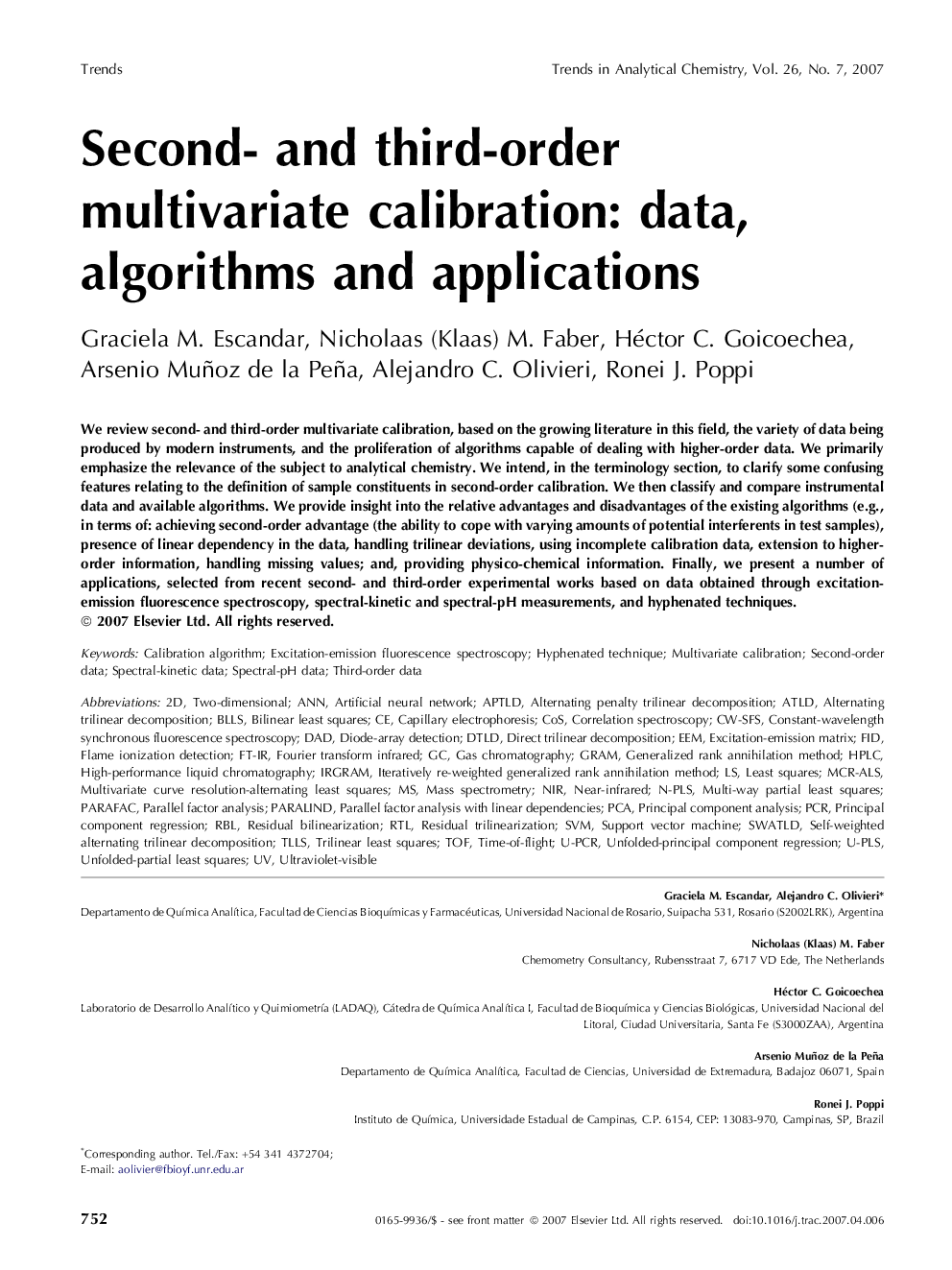| Article ID | Journal | Published Year | Pages | File Type |
|---|---|---|---|---|
| 1248687 | TrAC Trends in Analytical Chemistry | 2007 | 14 Pages |
We review second- and third-order multivariate calibration, based on the growing literature in this field, the variety of data being produced by modern instruments, and the proliferation of algorithms capable of dealing with higher-order data. We primarily emphasize the relevance of the subject to analytical chemistry. We intend, in the terminology section, to clarify some confusing features relating to the definition of sample constituents in second-order calibration. We then classify and compare instrumental data and available algorithms. We provide insight into the relative advantages and disadvantages of the existing algorithms (e.g., in terms of: achieving second-order advantage (the ability to cope with varying amounts of potential interferents in test samples), presence of linear dependency in the data, handling trilinear deviations, using incomplete calibration data, extension to higher-order information, handling missing values; and, providing physico-chemical information. Finally, we present a number of applications, selected from recent second- and third-order experimental works based on data obtained through excitation-emission fluorescence spectroscopy, spectral-kinetic and spectral-pH measurements, and hyphenated techniques.
